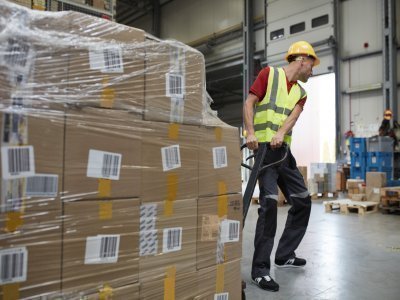Why ‘How To Lift’ Training Isn’t Enough
Manual handling can be a necessary part of getting a job done at many workplaces. Where manual handling involves moving people, repetitive actions, unstable loads and other factors, the work can become hazardous and it is the biggest cause of injury at many workplaces. Managing the risks associated with hazardous tasks is of paramount importance but unfortunately, many businesses consider ‘How to Lift’ training an effective control. The Heads of Workplace Safety Authorities Musculoskeletal Disorders national working group has released a Position Paper1 which explains the need to go beyond basic 'how to lift' training to keep employees safe at work.
Hazardous manual handling can cause a range of serious injuries which affect muscles, nerves, tendons, joints, cartilage, ligaments or spinal discs. These are known as musculoskeletal disorders (MSDs). The main focus of the national working group is the prevention of these sort of painful and debilitating work-related MSDs which can be difficult to treat and severely impact the lives of those experiencing them.
Why ‘How To Lift’ Training Isn’t Enough
The Position Paper highlights that 'How to Lift’ training – for example how to bend your knees or straighten your back to lift safely - is not effective in reducing risks nor injury rates due to hazardous manual handling tasks. It only focuses on the individual rather than addressing how the work could be done better.
In order to manage the health and safety risks associated with hazardous manual tasks, you need to design the work to be as safe as possible by referring to the hierarchy of controls. Training should then be provided to your employees that details:
- The tasks involved in their work
- Control measures in place to reduce the risks
- How the control measures are to be implemented
Interestingly, 'how to lift' training is not actually a legal requirement yet many PCBUs/employers think that it is a requirement under WHS/OHS laws. Providing ‘how to lift’ training is not a prescribed requirement of any Work/Occupational Health and Safety (WHS/OHS) legislation in Australia or New Zealand.
Legislative Requirements in Australia
- A PCBU/employer must manage the risk of MSDs associated with hazardous manual tasks by using a risk management approach.
- A PCBU/employer must consult with workers when identifying hazards, assessing risks and developing, implementing, maintaining, reviewing and revising control measures. Appropriate consultation and collaboration can support effective and sustainable risk management of hazardous manual tasks.
- A PCBU/employer must identify hazardous manual tasks in their workplace and implement suitable control measures, in line with the hierarchy of control, before providing training to workers in the type of control measures implemented.
- A PCBU/employer must ensure that hazardous manual task information, training and instruction provided to a worker is suitable and adequate.
Keep your employees safe and avoid the enormous cost that nasty musculoskeletal disorders can impose on your business by addressing the cause of the problems rather than how your employees get around the problems.
Need help assessing Manual Handling risks in your business? Learn More.
Note: In Australian WHS/OHS legislation, the term ‘hazardous manual tasks’ is used in most states and territories. The terms ‘hazardous manual handling’ and ‘manual handling’ are also used.
References
1 https://www.worksafe.qld.gov.au/__data/assets/pdf_file/0021/101289/heads-of-workplace-safety-authorities-on-how-to-lift-training.pdf









